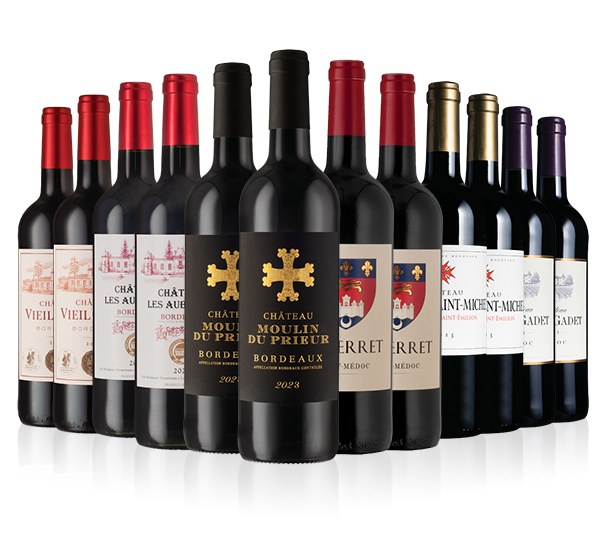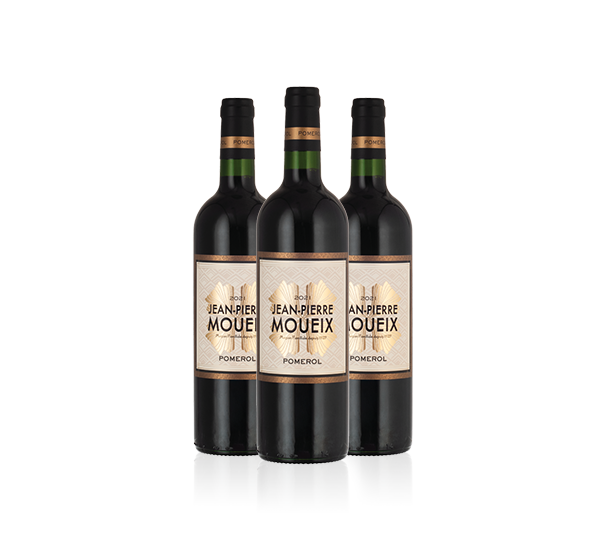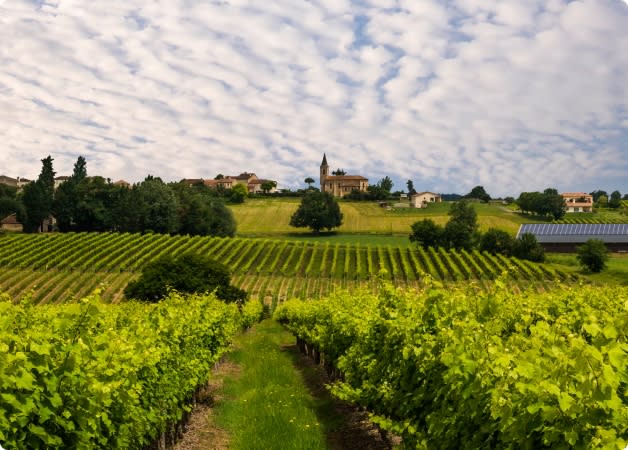Filter by
- $19.99 per bottle12 bottles - $239.88$215.88 Advantage Member Price
- $89.99 per bottle12 bottles - $1079.88$971.88 Advantage Member Price
- 99-Point Pessac-Léognan Grand Cru Classé$169.99 per bottle12 bottles - $2039.88
- $59.99 per bottle12 bottles - $719.88
- $199.99 per bottle12 bottles - $2399.88$2159.88 Advantage Member Price
- 12 bottles - $295.88
- 3 bottles - $209.97
- $29.99 per bottle12 bottles - $359.88$323.88 Advantage Member Price
- $22.99 per bottle12 bottles - $275.88$248.28 Advantage Member Price
- $89.99 per bottle12 bottles - $1079.88$971.88 Advantage Member Price
- $39.99 per bottle12 bottles - $479.88
- $49.99 per bottle12 bottles - $599.88$539.88 Advantage Member Price
- $40.99 per bottle12 bottles - $491.88$442.68 Advantage Member Price
- $139.99 per bottle12 bottles - $1679.88
- $29.99 per bottle12 bottles - $359.88$323.88 Advantage Member Price
- $199.99 per bottle12 bottles - $2399.88
- $149.99 per bottle12 bottles - $1799.88
- $299.99 per bottle12 bottles - $3599.88
- $329.99 per bottle12 bottles - $3959.88
- $149.99 per bottle12 bottles - $1799.88
- $34.99 per bottle12 bottles - $419.88$377.88 Advantage Member Price
What is Bordeaux Wine?
Bordeaux wine is often considered the crème de la crème of French wines. Hailing from the picturesque Bordeaux region in southwestern France, it’s most famous for its elegant red blends. This region is home to some of the most storied and collectible wines on the planet.
What sets Bordeaux reds apart is their masterful blending of grape varieties and regional character. These wines typically feature some combination of Merlot, Cabernet Sauvignon, and Cabernet Franc, along with smaller amounts of Malbec, Petit Verdot and (very rarely) Carménère. The Left Bank (of the Gironde estuary and the Garonne River) tends to lean toward more structured, full-bodied Cabernet Sauvignon-dominant blends, while the Right Bank offers softer, fruitier styles made with predominantly Merlot. Whatever your preference, Bordeaux wines are an experience like no other.
What makes wines from Bordeaux special?
It’s the rare balance of soil, sea and skill. Bordeaux’s vineyards benefit from a maritime climate and a patchwork of gravel, clay and limestone soils—conditions that allow grapes to thrive and express remarkable depth. But what truly defines the region is its dual personality: the Left Bank’s gravel-rich terrain favors Cabernet Sauvignon, known for its structure and aging potential, while the Right Bank’s clay-heavy soils bring out the softness and generosity of Merlot.
This natural contrast, paired with centuries of winemaking tradition, creates red blends that are both balanced and complex. From bold and age-worthy to smooth and fruit-forward, Bordeaux wines carry the signature of their land and legacy in every bottle.
What is the history of winemaking in Bordeaux?
Bordeaux’s wine roots run deep—dating back centuries—but the region truly made its mark in the 19th century. The famous 1855 Bordeaux Wine Classification put its prestigious châteaux, or wine estates, on the map, labeling the “First Growths” that remain iconic today. These châteaux, such as Lafite and Margaux, became symbols of excellence and helped define Bordeaux’s global reputation as a benchmark for fine wine.
Beyond these legendary names, thousands of smaller producers continue to carry the region’s winemaking legacy forward—blending craftmanship, tradition and a strong connection to the land.
What are the key Bordeaux wine regions?
Bordeaux’s key wine regions each offer a unique expression shaped by soil, grape variety and style. The Left Bank—home to Médoc and Graves—leans on Cabernet Sauvignon for bold, structured reds, while the Right Bank’s Saint-Émilion and Pomerol focus on plush, Merlot-based wines. Entre-Deux-Mers stands out for good-value reds and crisp, citrusy white blends of Sauvignon Blanc and Sémillon. The village of Sauternes is home to Bordeaux’s world-famous sweet wines, made with grapes concentrated by Botrytis cinerea (or noble rot).
What are the most famous Bordeaux wine brands?
Bordeaux has its legends, and a few names stand above the rest. Château Lafite Rothschild is prized for its structure, elegance and aging potential. Château Latour delivers bold, powerful reds, while Château Margaux is all about finesse and floral complexity. Château Haut-Brion, the only First Growth outside the Médoc, offers deep layers of spice, smok and dark fruit. On the Right Bank, Château Cheval Blanc showcases the silky, aromatic side of Cabernet Franc. Together, these estates represent the best Bordeaux wines and some of the most sought-after bottles in the world.
What is white Bordeaux wine?
Often overshadowed by its red counterparts, white Bordeaux deserves your attention. It’s typically a blend of Sauvignon Blanc and Sémillon—sometimes with a dash of Muscadelle—producing wines that range from zesty and herbal to opulent and honeyed. The dry whites from Pessac-Léognan offer elegance and structure, often aged in oak for a creamy, spiced finish. At the sweeter end of the scale, the legendary Sauternes reveals a world of golden, luscious complexity—rich, full-bodied, and ideal for special occasions or cheese pairings.
Explore our collection of exceptional white Bordeaux wines.
What food pairs well with Bordeaux?
Bordeaux red wines are a natural fit at the dinner table. If you love the bold, balanced Bordeaux—with its layers of dark fruit, earthy notes and firm tannins—you’ll find it’s even better paired with hearty dishes like roasted meats, aged cheeses and slow-cooked stews. A classic Bordeaux wine pairing brings out the best in both the wine and the dish.
- Red Bordeaux shines with grilled steaks, braised lamb or hearty stews.
- White Bordeaux loves fresh seafood like oysters, crab or roasted white fish
Cheese pairing tip: Aged cheddar or gouda pairs beautifully thanks to the ripe flavors and tannins in red Bordeaux.
Is Bordeaux wine dry?
Yes, most Bordeaux wines are dry. That includes the region’s famous reds—typically blends of Cabernet Sauvignon, Merlot and Cabernet Franc predominantly—which are made without residual sugar, giving them a firm structure and savory complexity. Dry white Bordeaux wines, often blends of Sauvignon Blanc and Sémillon, are also crisp and refreshing. The exception? Sauternes, a luxurious, sweet white wine made from botrytized grapes in a select few communes in Bordeaux.

























